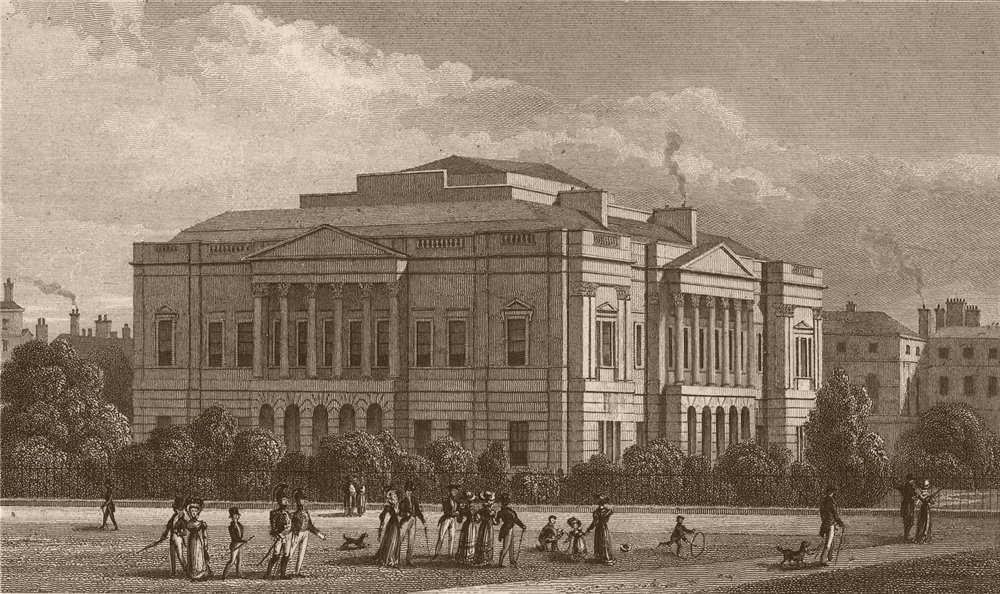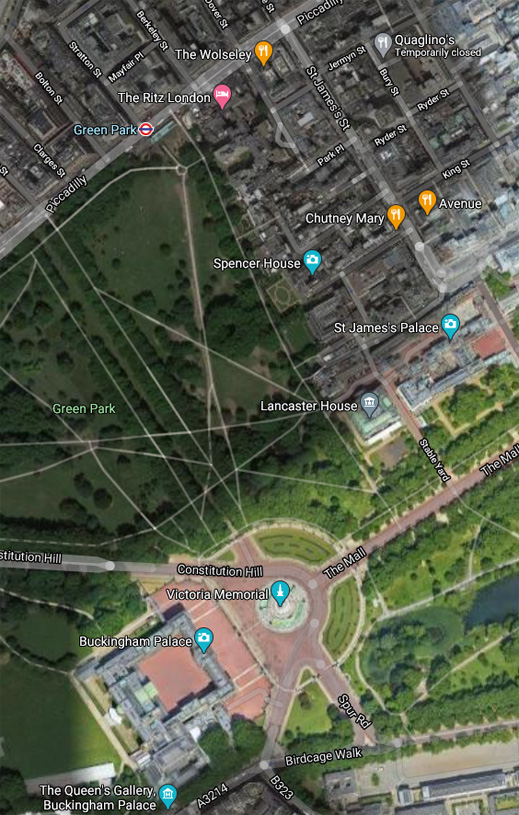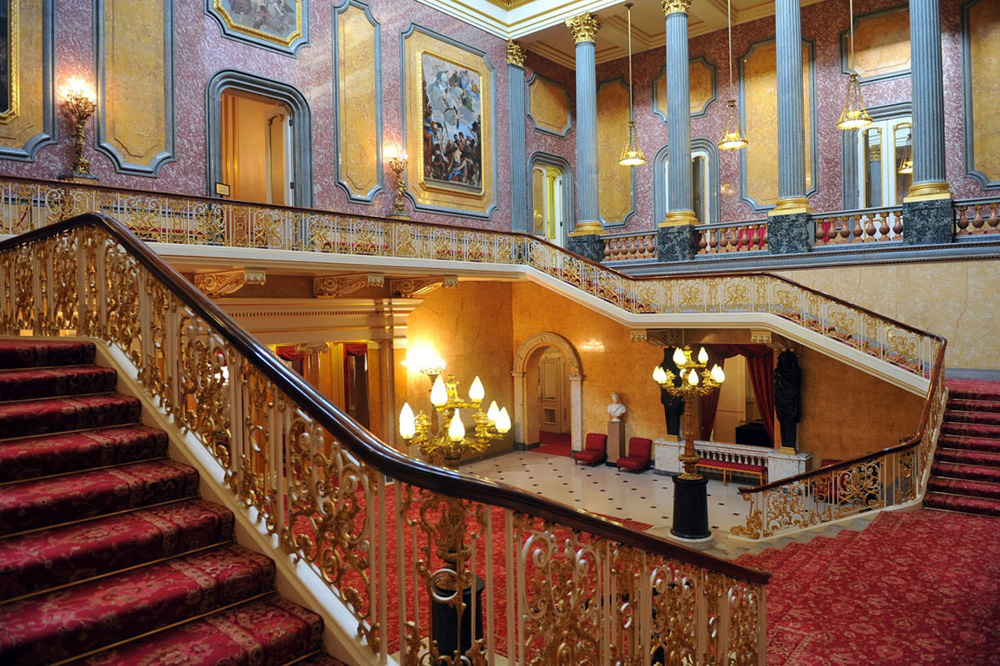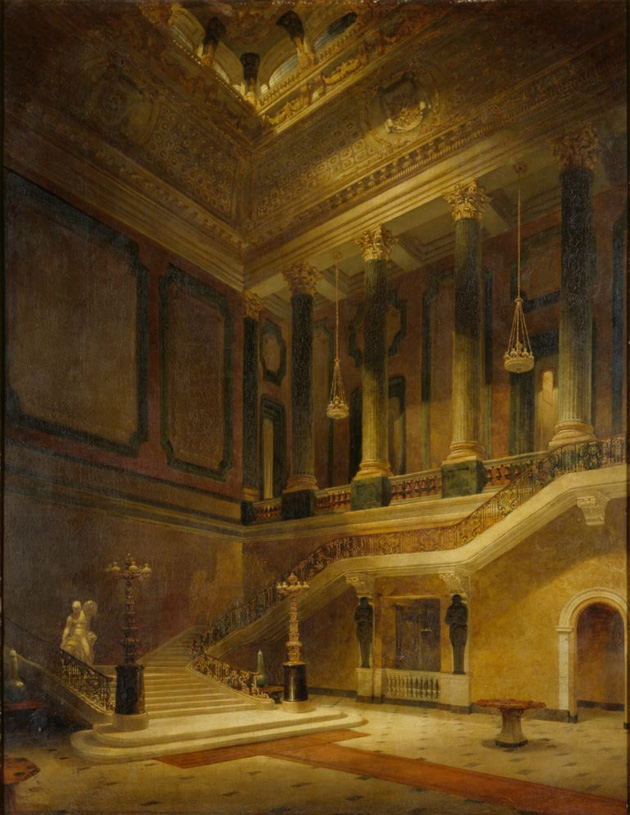Begun in 1825, the house was originally built for George IV's brother, the Duke of York, and was known as York House. After he
died in 1827, it was acquired, with the interior uncompleted, by the 2nd Marquess of Stafford and was renamed Stafford House.
He became the 1st Duke of Sutherland in 1833 and died later that year. His son, the 2nd Duke, inherited the house and completed
its construction. It was assessed for property taxes as the most valuable private house in London.
The 2nd Duke's wife,
Harriet Sutherland,
was
Queen Victoria's best friend and Mistress of the Robes. On
arriving at Stafford House from
Buckingham Palace, the Queen
told Harriet, "I have come from my house to your palace." In 1912 the house was acquired by Sir William Lever of Lever soap
fame. He renamed it Lancaster House in honour of his home county of Lancashire and presented it to the nation the following
year. Until 1945 it housed the London Museum. Queen Elizabeth's coronation banquet was held there in 1953. It is now used for
government receptions.
 York House c. 1826
York House c. 1826



